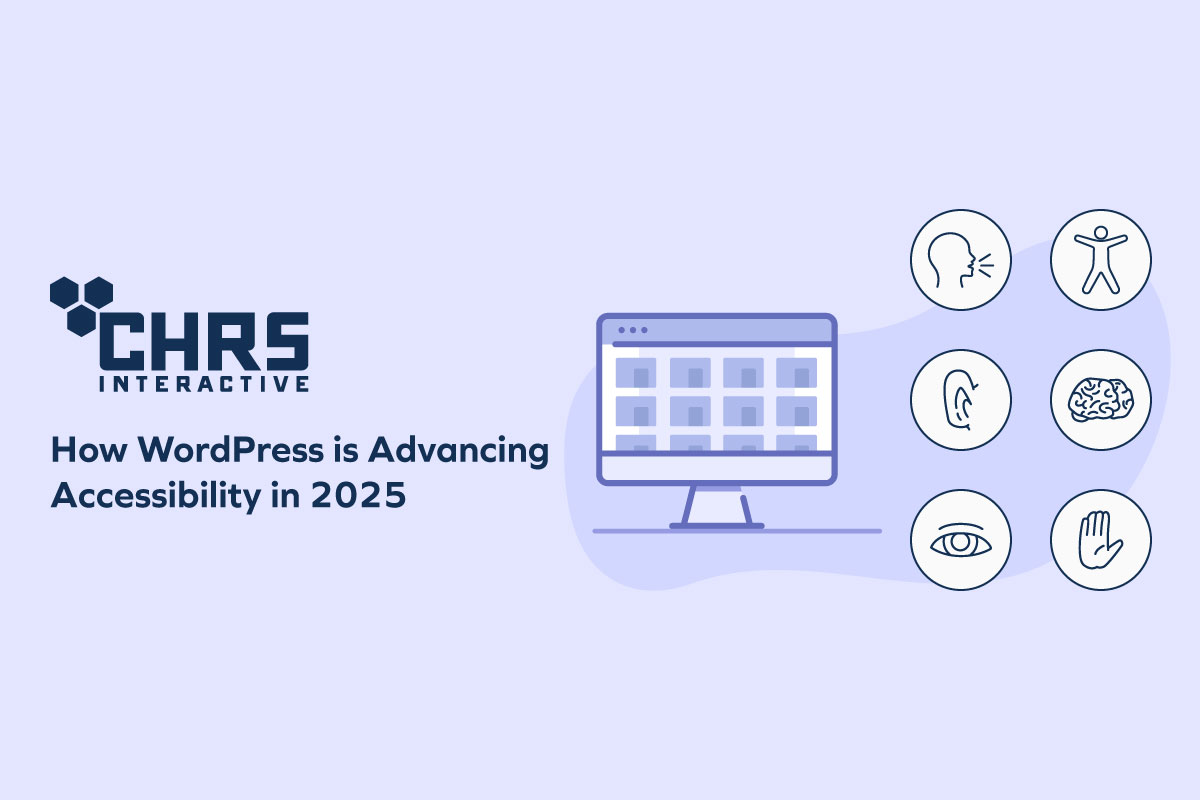Accessibility features make it easier for people with disabilities to interact with your website, and this is important because more than 70 million American adults have a disability*.
Fortunately, as of 2025, WordPress still continues to provide some of the best accessibility features for websites, making the internet more inclusive.
So what ADA features does WordPress offer? These include advanced plugins and AI-powered solutions, all geared towards helping WordPress developers build websites that improve the user experience for people with disabilities.
This article will dive deeper into how WordPress is advancing accessibility in 2025. The first half of this article will explore some tools and techniques WordPress supports, then the second half will outline some examples worth trying.
Inclusive Design Tools and Techniques
Let’s look at the design tools and techniques WordPress offers developers that allows them create a more inclusive user experience. These include:
- Voice User Interfaces (VUI)
- AI-Powered Personalization
- Micro-Interactions
- Color Contrast Tools
Let’s explore these!
1. Voice User Interfaces (VUI)
Voice User Interfaces (VUI) allow users to interact with devices and applications using voice commands, just like using Amazon Alexa, Google Assistant, and Apple Siri. This is most useful for people with motor disabilities, visual impairments, or those that generally struggle with traditional input methods.
This accessibility feature works by first being trained on natural language and uses machine learning to understand and better apply a wide range of commands. This makes it much easier to navigate your website and interact with what you content.
However, other people besides disabled people can take advantage of VUIs to have a more hands-free experience with your website. With this, they can reduce the cognitive requirement of using your website, which can even increase user retention.
2. AI-Powered Personalization
Imagine an elderly person with visual impairments visits your site but the words, font, and other features in a style and size that they struggle to read. In this case, they either will struggle to navigate your site or meet their needs elsewhere.
Fortunately, WordPress offers AI-Powered personalization tools that allows you to collect essential user data through cookies. This includes their browsing preference, tools like a screen reader, interaction pattern, and many more.
This data then lets you identify your users and create options to help them better use your website. So for example, in the previous scenario, you can then increase the text size, color contrast, and other things to make reading much easier.
3. Color Contrast Tools
WordPress supports a variety of color contrast tools, which are meant to make words, images, and other content easier to view on your website. These tools work by modifying the contrast between text, images, and other visual elements to make them easy to distinguish by people with visual disabilities.
Wth this inclusive addition, users with visual impairments can stay longer on your website, explore its offerings, and possibly patronize your services.
Top Accessibility Features and Plugin in WordPress 2025
So, are you interested in incorporating some of these accessibility features into your website? This section will reveal some of the best plugins and accessibility features in WordPress to make your platform more inclusive.
Here are our top picks:
1. WP Accessibility
Most WordPress website owners use WP Accessibility to help people with disabilities better navigate their platform. This tool helps you make quick adjustments to your website’s themes without needing to understand complex programming languages.
The same applies to introducing new elements to your website, as they can be incorporated without knowing much about coding. Some of its features include finding images without alt attributes, removing tab index on elements, and making image descriptions much longer.
2. UserWay
WordPress website owners use UserWay to check the accessibility status of their site. In other words, it lets you know whether your site is inclusive and what you can do to improve it.
Some recommendations include changing your color contrast, text size, keyboard navigation, and more. The plugin also comes with pause animations, highlighted links, tweaks for text format, etc.
3. AccessibilityWP Toolbar
The AccessibilityWP Toolbar is quite an innovative option for disabled people. The tool allows website owners to add an accessibility toolbar to their website. So, visitors can tweak and implement the accessibility feature they prefer.
Visitors have different options to pick from, including text to speech options, color adjustment, font size change, and many more. So, instead of you guessing what your users need, they can pick it themselves.
4. OneClick Accessibility
Just like the previous plugin, OneClick Accessibility gives visitors a toolbar. This allows them to modify front end elements to navigate your WordPress site with less hassle. It’s also worth noting that OneClick lets you set a limit on how much customizations users can make, allowing them to set their preference without it getting chaotic.
In addition, the plugin remembers what selection your visitor made, so they won’t have to make the same modification when they return to your site another time.
5. Accessibility Widget
Accessibility Widget is another widely used widget on WordPress, and it lets website wonders change the size of widgets with ease. In simpler terms, you can make the sidebar widgets more visually appealing instead of distracting or intimidating.
It’s a very common tool, however, note that your previous setting reverts to default after every update. But redoing your previous configuration only takes a few minutes.
Conclusion
Making your website easier to access for people with disabilities moves the internet one site close towards an inclusive cyberspace. But besides inclusivity, accessibility features encourage visitors to stay longer, interact with your site, and possibly use your service.
Fortunately, WordPress and its plugins make this easier. You can incorporate text-to-speech, which helps the visually impaired better read what’s on their screen. On the other hand, you can use micro-interaction to minimize errors and help users complete tasks faster.


